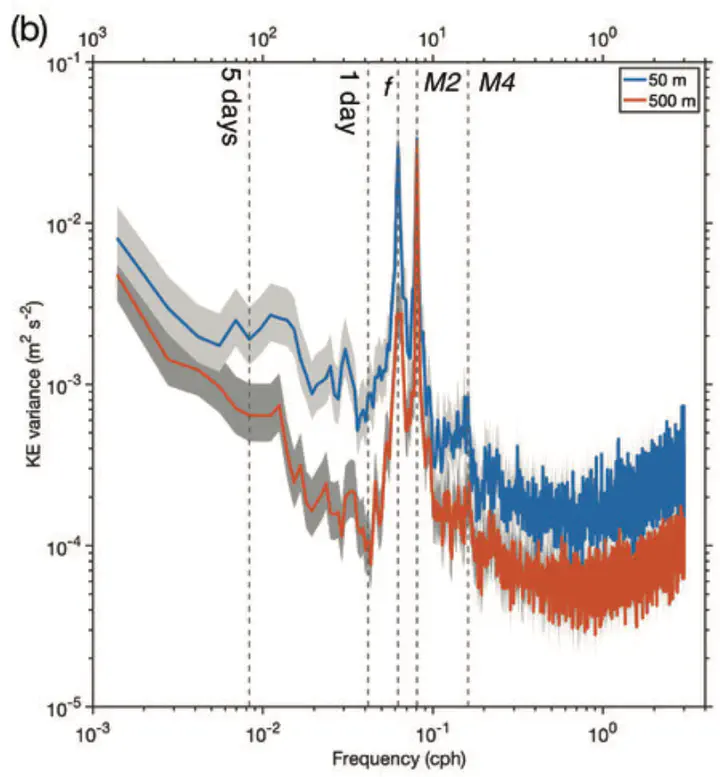Kinetic Energy Transfers between Mesoscale and Submesoscale Motions in the Open Ocean’s Upper Layers

Abstract
Mesoscale eddies contain the bulk of the ocean’s kinetic energy (KE), but fundamental questions remain on the cross-scale KE transfers linking eddy generation and dissipation. The role of submesoscale flows represents the key point of discussion, with contrasting views of submesoscales as either a source or a sink of mesoscale KE. Here, the first observational assessment of the annual cycle of the KE transfer between mesoscale and submesoscale motions is performed in the upper layers of a typical open-ocean region. Although these diagnostics have marginal statistical significance and should be regarded cautiously, they are physically plausible and can provide a valuable benchmark for model evaluation. The cross-scale KE transfer exhibits two distinct stages, whereby submesoscales energize mesoscales in winter and drain mesoscales in spring. Despite this seasonal reversal, an inverse KE cascade operates throughout the year across much of the mesoscale range. Our results are not incompatible with recent modeling investigations that place the headwaters of the inverse KE cascade at the submesoscale, and that rationalize the seasonality of mesoscale KE as an inverse cascade-mediated response to the generation of submesoscales in winter. However, our findings may challenge those investigations by suggesting that, in spring, a downscale KE transfer could dampen the inverse KE cascade. An exploratory appraisal of the dynamics governing mesoscale–submesoscale KE exchanges suggests that the upscale KE transfer in winter is underpinned by mixed layer baroclinic instabilities, and that the downscale KE transfer in spring is associated with frontogenesis. Current submesoscale-permitting ocean models may substantially understate this downscale KE transfer, due to the models’ muted representation of frontogenesis.